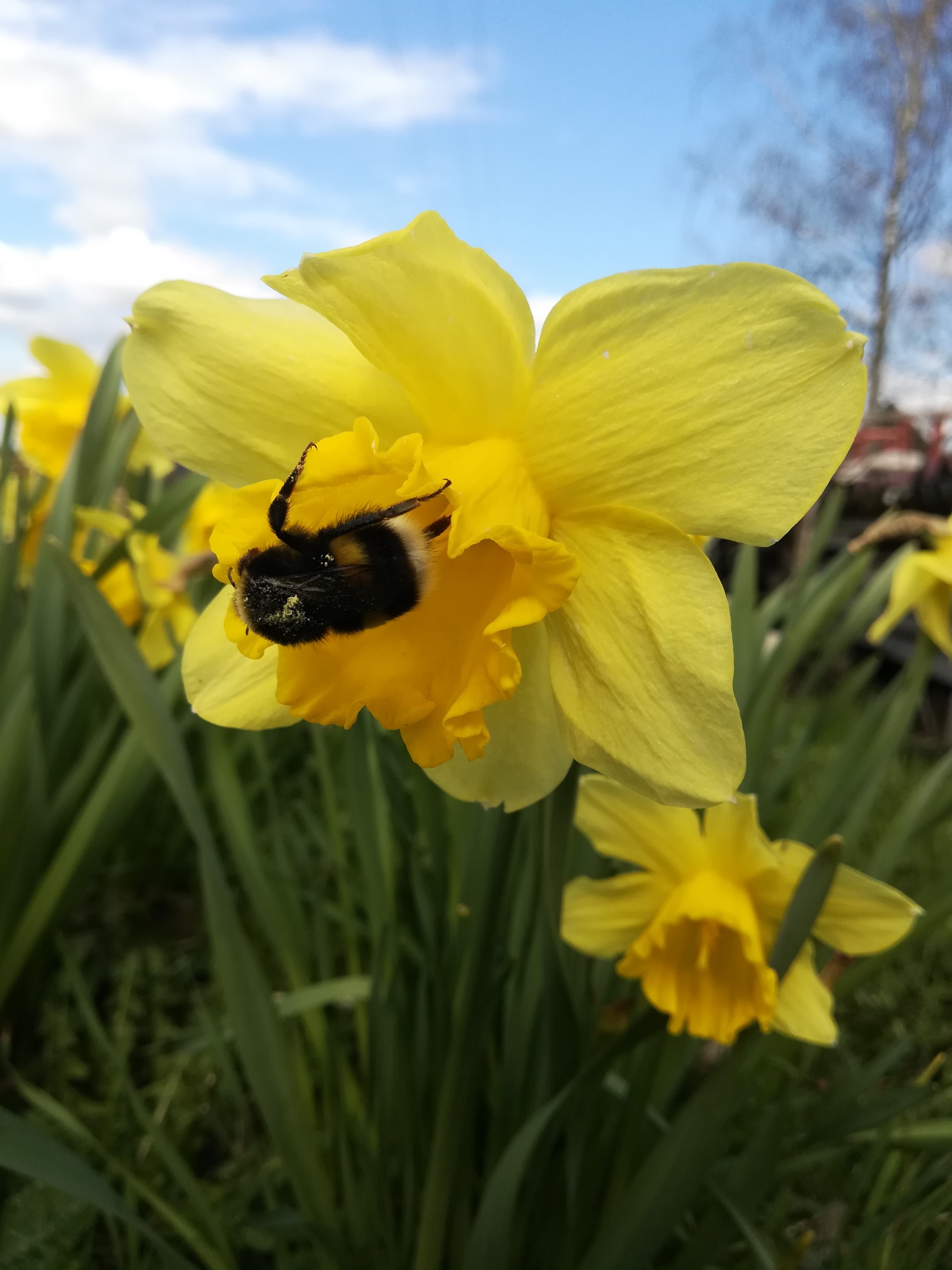How do agri-environmental measures affect the number of bumblebees?
In Estonian, bumblebees (genus Bombus) are called rural bees or forest bees. These insects are an essential link for the normal functioning of the living environment and the economy, including agriculture. We look at the benefits of environmental measures, which should, among other things, help save pollinators.
Bumblebees belong to the Apidae family of the Hymenoptera order. There are 21 species of real bumblebees living in Estonia. In addition, eight species of cuckoo bumblebees are known to parasitise in the nests of real bumblebees. Bumblebees are insects that live as families in colonies and play a very important role in the ecosystem as pollinators. In addition to bumblebees, honeybees, solitary bees, many butterflies, wasps, and hoverflies are also important pollinators. The importance of these insects in agriculture lies in the fact that pollination significantly increases crop yields - by almost 40%. The best-known crops pollinated by bumblebees are beans, apples, clovers, oilseed rape, turnip rape, and strawberries [1].

The impact of modern agriculture on bumblebees. Agriculture has largely negatively affected many species whose main habitats are in the agricultural landscape. An important factor is the increasing and continuous use of synthetic plant protection products and mineral fertilisers, but also changes in land use (cereal fields have become larger and semi-natural communities have decreased) and landscape structure (very large fields instead of small plots); in addition, agricultural production has become increasingly efficient [2].
Biodiversity has also been adversely affected by the fact that there are fewer and fewer small farms. At the same time, the area of fields has increased. Thus, there are fewer and fewer small plots of land, and the number and area of habitats at the edges of the fields have also decreased. Changes in the agricultural landscape have affected the situation of bumblebees. The distribution and abundance of many bumblebee species have decreased. According to a report by the International Union for Conservation of Nature (IUCN), the numbers of almost half (46%) of bumblebee species in Europe have fallen constantly [3].
Environmental measures have been developed to reduce the negative impact of agriculture on biodiversity. Since 1992, they have been mandatory for all EU Member States. It is a financial support for farmers for lost income or additional costs. For example, support is provided for organic production, environmentally friendly management, and the restoration of semi-natural communities. Synthetic plant protection products and most mineral fertilisers may not be used in organic farming, but organic fertilisers are allowed. However, in order to receive support for environmentally friendly management, a farmer has to implement several different environmentally friendly measures (e.g. crop rotation, leaving the field edges uncultivated, establishing uncultivated field edges of 2–5 m).
Importance of crop rotation and uncultivated field edges. Evolutionarily, the most important food object for bumblebees is wild plants. In modern agriculture, blooming crops, such as clovers, oilseed rape, and turnip rape offer an alternative. At the same time, crop yields depend on the abundance of both bumblebees and other pollinators. The importance of wild flowering plants for bumblebees becomes particularly clear at a time when crops have not started to bloom, have stopped blooming, or have been cut/harvested. If neither food object (natural plants and flowering crops) is available, the so-called bottleneck effect occurs because there is not enough food for the bumblebees. Examining the impact of crop rotation on the species richness and abundance of bumblebees, it was concluded that when crop rotation is not applied to cereals, bumblebees concentrate only on the edges of the field because they do not have enough food in the field. Thus, the abundance of flowering plants suitable for bumblebees is a very important feature to describe the relationship between bumblebee abundance and the environmental conditions in the agricultural landscape.
Bumblebees can harvest food from uncultivated areas left at the edges of cereal fields when the crops are not flowering (for example, in spring) or when the crop has already been harvested (late summer, autumn). This is the reason for the requirement not to cultivate field edges or to establish field edges 2–5 m wide, although no crop will be harvested from there. If the field edges are not left, the number of bumblebees as well as other pollinators would most likely decrease and, as a result, crop yields would decrease due to a lack of pollinators. Thus, these field edges also play a very important economic role. When establishing the field edges, it is important to follow the principle that only seeds of domestic wild plants are sown there to prevent the spread of alien species. Field edges are particularly important in intensively farmed agricultural areas with few semi-natural habitats. There, the field edges serve as feeding, nesting, and wintering grounds for the bumblebees.
A study confirmed that organic farming promotes the spread of endangered bumblebee species that are sensitive to intensive agriculture. For example, species with a small family also have a shorter flight radius. Therefore, they are particularly sensitive to intensive agriculture. They would benefit from traditional farming practices that do not use synthetic pesticides or mineral fertilisers. Bumblebee species with a larger family have a larger flight radius and can therefore obtain food from further afield. This is probably why the intensity of agricultural production affects them less than other bumblebee species.
Full article in the January 2019 issue of Eesti Loodus, pages 55–59.
www.eestiloodus.ee/arhiiv/Eesti_Loodus01_2019.pdf
Author: Riho Marja
Editor: Reigo Roasto
__________________________________________________
[1] Goulson, Dave 2010. Bumblebees. Behaviour, ecology and conservation. Second edition. Oxford University Press.
[2] Winfree, Rachael et al. 2009. A meta-analysis of bees’ responses to anthropogenic disturbance. – Ecology 90: 2068–2076.
[3] Nieto, Ana et al. 2014. European Red List of bees. Luxembourg: Publication Office of the European Union.